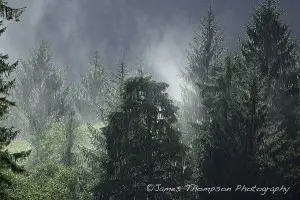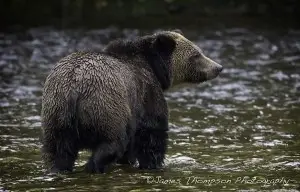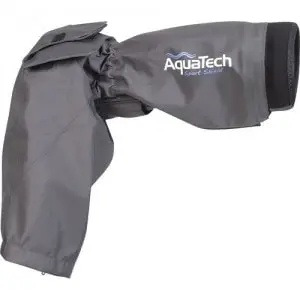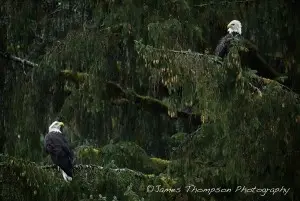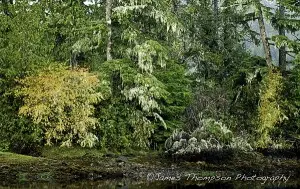In my last post I reviewed some of the pros and cons of the various camera types out there to help you make an informed choice as to which camera to bring on your OuterShores adventure. In this post I’d like to give you some tips on how to keep shooting even when the weather isn’t cooperating.
Coastal BC is home to the largest tracts of unspoiled temperate coastal rainforest in the world. The key word in that sentence for this blog post is rain! There’s a good chance you’ll see some rain on your trip, even in the middle of summer. This doesn’t mean it’s time to put your camera away, however. Our coastal ecosystems thrive on the abundant rainfall and life goes on as usual rain or shine. Allow the knowledge that you can retreat at any time to the warm and cozy main salon of the Passing Cloud to spur you to be adventurous with your photography on your trip!
The first thing to consider is your own warmth and comfort. Dress in layers using wool or fleece as insulation and cover it all in sturdy rain gear. Although waterproof-breatheables are lightweight and comfortable, they are expensive. Basic coated nylon rain gear will work just fine, along with a comfy pair of rubber boots. A pair of thin gloves comes in handy too when your trying keep your fingers warm enough to fiddle with your camera’s controls. Top it off with a warm wool or fleece hat and you’re good to go.
While most cameras are somewhat splash-proof, only the most expensive DSLRs or purpose-built compacts are truely weather-proof, and even these cameras benefit from some protection in a good downpour or when there’s salt spray in the air. The simplest and cheapest option for protecting your gear is the ubiquitous hotel shower cap. Lightweight, elasticized and transparent, it’s easy to have in your pocket at all times to quickly throw over your camera when the rain starts. Only slightly more complex is a clear garbage bag – the kind often used for recycling. Simply cut a hole in one end for your lens and bring it along with a sturdy rubber band in your camera bag. When the rain starts, insert your lens through the hole, secure it with the rubber band and keep right on shooting.
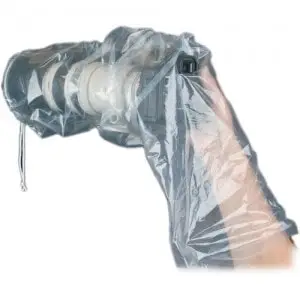
If you’re planning on doing a lot of wet weather shooting on your trip and in the future, consider one of the manufactured solutions. Several companies make rain covers for DSLRs that cover even the longest telephoto lenses. These range in price from around $10 to $100s depending on the size and materials used. Check out Op/Tech, Think Tank Photo, Aqua Tech, and Lens Coat for examples. There are even covers for your external flash. No matter which system you choose, bring along a couple of spare garbage bags to stow your camera bag and other bits and pieces in when conditions are wet.
So now you and your camera are protected and it’s raining. What to shoot? As mentioned previously the denizens of the coastal rainforest don’t slow down a tick just because it’s raining. Marine animals, birds, and bears carry on their daily activities regardless.
Given the lack of light relative to a sunny day, you’ll need larger apertures or higher ISOs to capture well exposed images. Use a slow shutter speed to give a soft misty look to your pictures or a fast one to stop the rain drops in mid-air if the rain itself is part of the story you’re telling. The soft diffused light works well for closeups, and wet foliage takes on the rich verdent green that is so classic of our coastal forests.
Use a polarizer to cut the reflections of the water and bring out all the color.
So don’t stop shooting just because it’s raining! Take the opportunity to document this vital element in the coastal ecosystem while keeping you and your gear dry and protected.

